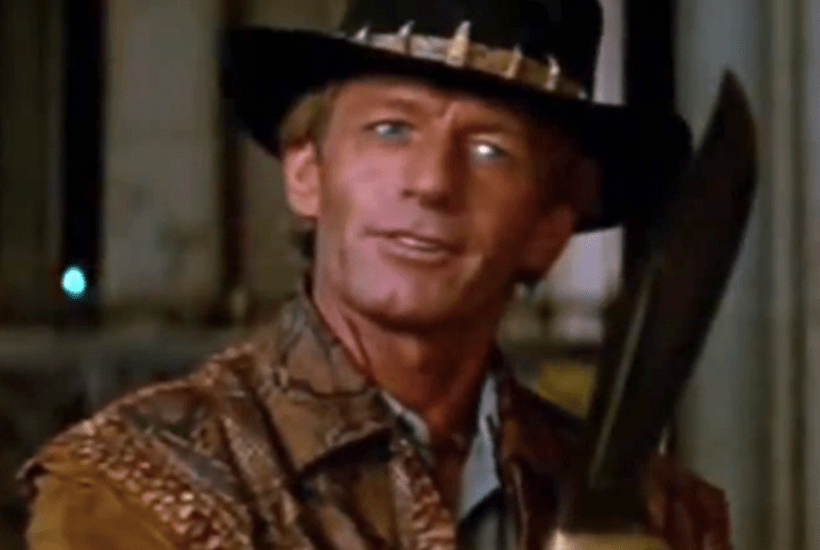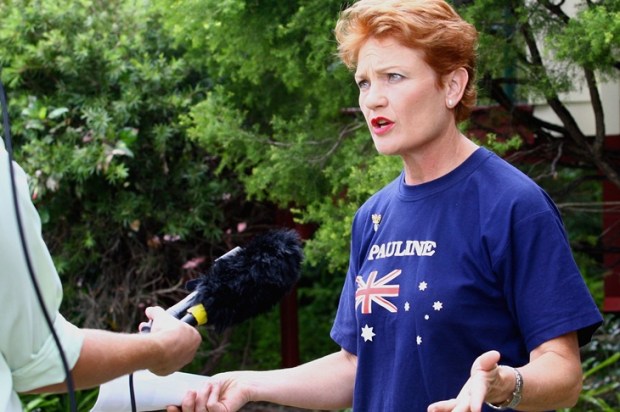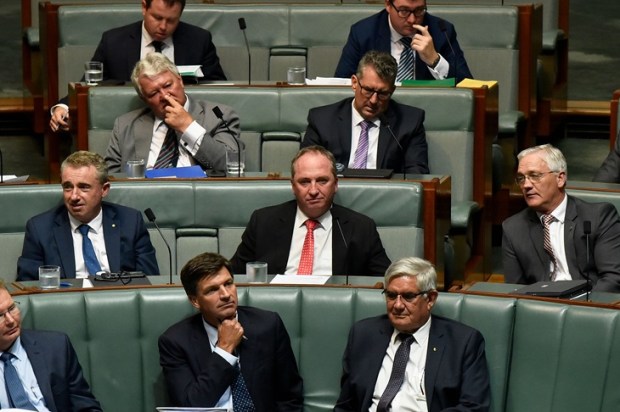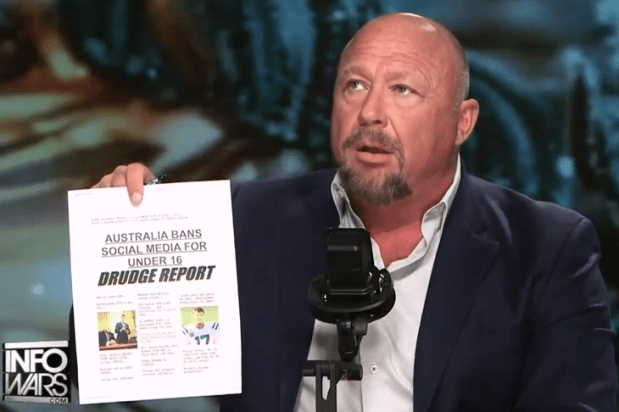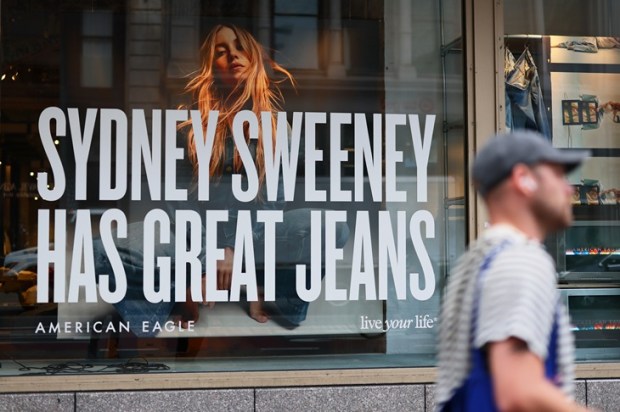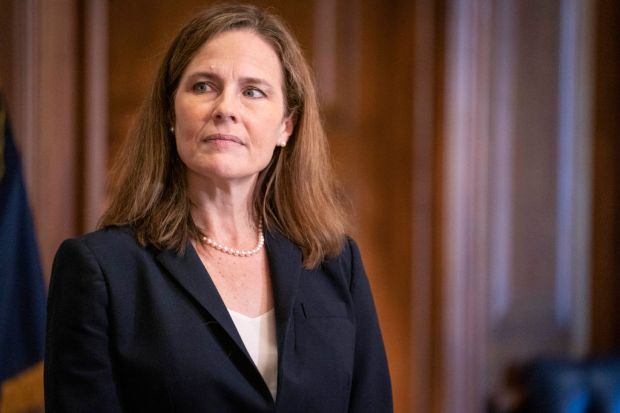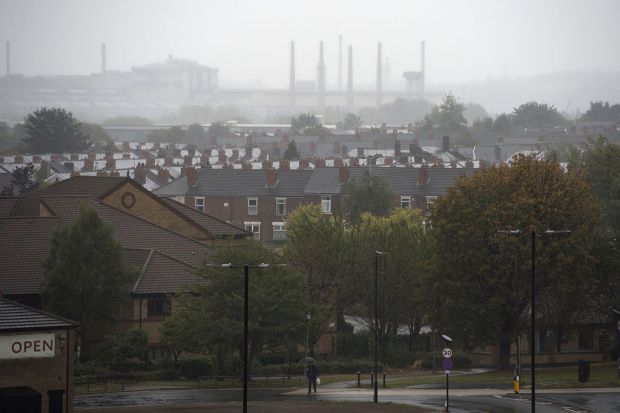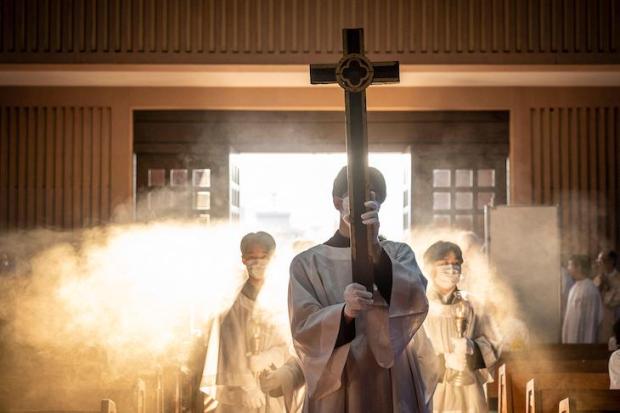Australian films are less popular today than they were decades ago. Consider the following statistics from recent Australian film history.
Between 1973 and 1992, six Australian films were the most popular film of the year at the Australian box office. These films were: Alvin Purple (1973), Gallipoli (1981), The Man from Snowy River (1982), Crocodile Dundee (1986), Crocodile Dundee II (1988,) and Strictly Ballroom (1992.) No Australian film since has topped Australia’s annual box office.
Ponder also what were the most popular Aussie films in the top 50 most popular movies at the Australian box office in each of the last five years:
In 2018: Peter Rabbit reached position 10. Ladies in Black was next at 29.
In 2017: Lion reached position 7.
2016: No Australian films were in the top 50.
2015: Mad Max: Fury Road was number 13, Dressmaker 17, Oddball 36, Water Diviner 39, Paper Planes 40, Last Cab to Darwin 48.
2014: No Australian films were in the top 50.
(The full list of the top fifty films at the annual Australian box office since 1992 is available from Screen Australia).
In 2018, 629 Australian films (narrative and documentary) were released, 92 were screened at Australian cinemas, 63 — a record– were new titles. Of these films only six made more than a million dollars, while only another 16 made more than $100,000.
It’s important also to look at the share Aussie films earned each year at the Australian box office. Figures dating back to 1977 reveal box office numbers heavily influenced by specific hits during certain years. For example, in 1986, when Crocodile Dundee was on release, Australian films earned a 23.55 per cent share of the Australian box office, while 2015 was also a banner year, with four Aussie film hits increased the country’s total box office share to 7.2 per cent, only to drop to 1.9 per cent the following year. The Australian-made share of the national film box office in 1977 was 10 per cent, while in 2018 it was 4.5 per cent with the ten-year average of that period being 4.1 per cent. The ten-year average for 1980 to 1989 was 11.59 per cent.
Why did the older Aussie films succeed?
The Australian film box office numbers show a simple fact: Aussie films are less popular in Australia today than they were 30 to 40 years ago.
Many reasons are cited why the popularity and (supposedly the) quality of Australian films (and TV) have declined over this period. Arguments proffered include: Australia has too small a private equity film market, not enough government investment, not enough female voices, has too low Australian quotas, too much foreign competition, not enough theatres, changes in audiences and tastes, and so on.
But look more carefully at the box office stats listed above. Let’s see what pattern emerges of the types of Australian film that generally (not always) have been the most popular over the last 40 years.
A careful study of the nature of the cited Aussie film hits, especially those from the golden age of Australian film and television between 1980-1995, reveals clear reasons for their popularity. At least three fundamental attributes of these popular films jump out:
- They had a unique and positive Australian flavour;
- They were well-told stories with original Aussie character; and
- The main thrust of this article — they were benevolent in story and tone.
The charming and idiosyncratic Australian nature and original characters of most of the above noted Aussie film hits is obvious. Crocodile Dundee is now an internationally recognised icon of an Aussie larrikin and charmer. The red desert landscape of Priscilla says “Australia” to much of the world. The suburban Australian types in Strictly Ballroom are easily recognised as distinctly true blue urban Aussies. The Anzacs and their war adventures dramatized in Gallipoli are world-recognised Australian mythology.
The storytelling basic underlying these original Aussie tales is that they were written with clearly defined and motivated characters acting in adventures structured to be audience grabbers that induce claps and cheers.
Many older Australians might also proclaim that classic Aussie films like Crocodile Dundee, The Dish, The Castle, and Mao’s Last Dancer generally had better stories than current Aussie flicks. If you agree or disagree, make a comment below.
Benevolence
Let’s move to what I believe undergirds the appeal of many of the cited Aussie film hits of the last 40 years and is intrinsic to their storytelling.
If you consult the list of the top 100 grossing Australian feature films of all time at the local box office, you will see that darker films such as Mad Max, Babadook, and Wolf Creek were not as popular (nor made as much money) as the many benevolent Aussie films that especially dominate the top 50.
A benevolent view of life is the belief that success and happiness are achievable — and that tragedy and failure are exceptions. If you translate that philosophical point to regular film speak, benevolent films have positive, uplifting characters and happy endings.
Yes, your typical film critic (and many other intellectuals) might throw up their collective hands and proclaim the (alleged) artistic worthlessness of such “feel-good” movies, but the stats above argue that the Australian viewing public strongly disagrees. They prefer to see Crocodile Dundee not Romper Stomper, The Dish not Japanese Story and many of the Aussie films currently funded and released.
Look briefly at three classic and very popular Aussie films and you’ll see their benevolence.
In Crocodile Dundee, Mick Dundee finds himself a crocodile out of water, yanked out of the bush and dropped into the canyons of New York City, where he must learn to navigate thugs and pretenders all while fathoming that universal challenge of life, romantic love. By film’s end, Mick is successful on all fronts: After a series of fun adventures, this Aussie original wows New York and gets the girl. While audiences cheered him on. Crocodile Dundee is the most successful Aussie film of all time; in 1986 it alone earned an incredible 21.6 per cent share of the Australian box office.
The Dish explores Australia’s part in arguably the greatest achievement in human history, the first moon landing. Soon before the landing, things go wrong at the Parkes Observatory, which has a key role in transmitting the moon-landing images around the world. But the likable and skilled technicians at the observatory finally get it right and because of their work the whole world sees that intrepid and world-changing first step of Neil Armstrong.
Mao’s Last Dancer, based on the life of Chinese ballet dancer Cunxin Li, dramatizes his struggle to escape the repression of Mao’s communist China roiled in the murderous Cultural Revolution, his defection to America and finally his moving to Australia so he can pursue his two great passions: ballet dancing and romantic love. Against great odds, the heroic Li is eventually successful in both pursuits.
The ultimate benevolence of these three films is that their characters have free will and are efficacious. They make choices, selecting their own goals and actions. Then they struggle to achieve them. These characters are not the doomed product of “the system”, their biology, environment or emotions. They don’t have tragic flaws. These characters are real human beings who think, choose and value. They struggle in the world and they succeed.
Have Audiences Changed?
One might reasonably argue that the tastes of Australian film audiences have changed over the last 40 years in favour of darker visions of life and therefore we should be making bleaker films.
Film and art tastes have changed in Australia and across the world over the last generation. This is the time of Game of Thrones and Aussie horror film hits such as Babadook and Saw or dystopian actioners like Mad Max: Fury Road. But there has always been a segment of the film going population that enjoyed violent action flicks, horror films and tragic dramas. And such darker Aussie films have not been dominant among Australian film hits, in any period, including today. This is not meant to imply that darker Aussie films can’t be well written or well-produced, they can be and are. But what it does mean is that generally they aren’t what the Australian public predominantly wants.
Some might also argue that across the globe for many years the level of storytelling has been crashing and darkening. There is also some truth to this claim, but such arguments do not invalidate the fact that the Aussie films that most commonly do best with audiences are the ones with benevolent characters and stories. The 2018 Australian film box office stats confirm this. Last year, as noted, the two most popular Australian-made films were Peter Rabbit and Ladies in Black. Both films are benevolent in content and style.
Bruce’s Beresford’s Ladies, for instance, used a vibrant palette of warm colours and beautiful cinematography to brilliantly dramatize an innocent 1950s Australian culture and to help show good, elegant people yearning for better lives and learning how to love. In a poignant feel-good climax, the characters achieve their happiness. Ladies earned $11.0 million at the Australian box office. Evidently Australian audiences still want un-politicized, well-told tales of good people earning a win.
This leads us to consider the expression in some films of a malevolent worldview. This view is the dramatization of the belief that life is pain, failure and tragedy. How many Aussie films have you endured the last 20 years that portrayed tragedy, cursed Australians or their history, ended in death or mayhem? Want a downer, see an Aussie flick. Well, not that many Aussies do, as the stats above show. Sadly, when watching too many Australian films and TV shows today, one’s emotional reaction is: Who cares. And so Australians are turning off and not turning up.
Why are so many Aussie films and TV shows dark?
So why are many Aussie films so dark and, I believe, set to fail at the Australian (and world) box office? That is a complex topic, but I believe there are some clear answers.
First let’s deal with two popular arguments regarding government and Australian film and television production. A key argument often raised about the production of Aussie films and TV shows is that the government isn’t doing enough to boost the local industry, especially to dole out more money and to enforce higher quotas for Australian product. An obvious reply is: More money to create what type of stories? Just more of the too-often dark, dystopian or just plain weird Aussie films of recent years, for example? As noted, last year a record number of Aussie films were released in our cinemas but only 22 made more than $100,000 dollars. How many actually made a profit? And why not?
And regarding broadcast quotas for Australian television productions, these are just numbers enforced by a government without reference to story quality or sensibility. Is Aussie TV (and film) product so poor that it must be “protected”? The stats cited above for the 1980s show that if Aussie films are well written and benevolent, they will do well in the marketplace. Popular Australian television shows of recent years, notably Miss Fisher’s Murder Mysteries, Mystery Road and Bluey, also prove this point.
Second, many Australian films depend on federal and state government funding bodies for finance. Is it just coincidence that of the 94 films the national government film body Screen Australia had invested in up to 2017 not one had made a profit? Government-funded films don’t need to make money and don’t need to appeal to the wider, benevolent audience.
In its 2017-2018 Annual Report, Screen Australia reported that “Screen Australia invests in screen content primarily to achieve cultural and industry development outcomes.”
On its website, Screen Australia notes the reasons “Why Screen Australia Backs the Films It Does.” After claiming that “Excellence is the Key Criteria” (sic) it states, “Screen Australia part funds up to 20 features annually. The key criteria [sic] is excellence but there are other matters in play.” While “excellence” is a hard word to define and pin down, the 8 other noted Screen Australia criteria are revealing: cultural merit, regionalism, commercial/market-driven, innovation and risk, female balancing, diversity, talent development/career building, established talent. Judging by these criteria, there is little focus on story and profit for how Screen Australia invests in films. (You can read about film, TV and online stories recently funded for development by Screen Australia here.)
This is not meant to imply that Screen Australia is solely responsible for the sensibility or nature of Australian films, or that they don’t invest in some benevolent and popular or well-made Australian product.
However, it must be noted that funding by government agencies of Australian films is funding of films that Australian taxpayers have not freely chosen to support financially, unless they have paid to see them at the cinema. Cinema attendance by Australians is a personal vote of support in a marketplace for what type of films should be privately funded and created.
A private equity film finance market
It is certainly true that Australia, with a population of 25 million and an economy on recent figures of some $1.7 trillion, struggles to develop a large private equity film finance market. But what about Australia in the 1980s and 90s, those halcyon days of many successful (and many of the very best) Aussie film and TV stories? Australia’s economy was smaller then and most importantly during those golden film and TV years Australia had a film-TV tax rebate scheme called 10BA (more also here) which better allowed creatives and entrepreneurs to raise private capital and to get into bed together without a government bureaucrat nanny between them controlling so much film/TV funding and content.
In 2018, Screen Producers Australia released figures related to the Funding Sources of Australian screen product. Two figures noted were “47 per cent of productions received government funding of some kind” and “25 per cent of films received funding from private investors.”
The deepest cause of darkening film content
The deepest cause of the underlying and increasing darkness of Aussie (and international) films and TV is philosophical. The whole world, whether it be in the arenas of philosophy, politics, economics, world relations or the arts is getting darker and more malevolent. Story is just a captive of that general cultural trend. But, again, as the stats above show, big slices of film and TV audiences still want — maybe even need — a benevolent screen product to enjoy.
Solutions to the Aussie film and television decline
If Australian films losing their benevolence over the last 30 years is a fundamental reason for their decline in popularity, what then could be some solutions to help fix this problem?
Generally, the key solution is to put well-written, benevolent stories first. That, however, I believe can happen only if we encourage a bigger role for a for-profit Australian film and TV sector.
Films and television shows that are government-funded to help push some government cultural agenda, to garner good reviews from critics, or to amaze the festival circuit, as seems a current predilection and do not put story or audiences first. There’s a broader and ethical and political point at stake here too. Films should not be funded and developed by any government to push any ideology.)
Australian films and television shows would be better if they were funded more in a free market. Films should be funded by those who have their own shirts to lose or suits to win. Businesspeople. Profit-seeking businesspeople would to a greater degree create films and TV shows pitched towards a general audience who, as we have seen, enjoy benevolent well-told Aussie tales. As the cited statistics indicate, Australians do go to the movies more when they have benevolent Australian films to see.
Key to developing a freer market in the Aussie arts space is to replace government investment (and controls) with capitalist dollars (and freedom) by returning to a 10BA type of system or alternative free-market approaches that would give creatives more freedom while encouraging private investment, risk-taking, profit-making and greater concern for audience sensibilities and values.
Towards the Future
The big lesson to be drawn from the statistics cited above is that Australians still want what they consider to be good stories; well-told ones about good people struggling to find success and happiness in this world.
The good news is that Australian cinema is replete with examples of many successful world-class films that glow with distinctive Aussie flavours, uniquely Antipodean characters and original local conflicts. Witness the days of films such as The Castle and Crocodile Dundee and on smaller screens such classics as Bodyline and A Town Like Alice.
Do we want the Australian film and television industry to head the way of drama in live theatre or create a resurgence in the popularity and importance of Australian screen stories?
If it is the second, then I humbly suggest we return to telling good Aussie tales (produced in a free market) that express the most fundamental key to their story appeal and popularity: Benevolence.
Former Los Angeles producer/showrunner Scott McConnell is a Melbourne-based story developer and script consultant. You can read more of his work here.
Illustration: Rimfire Films.

